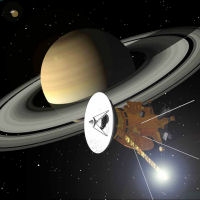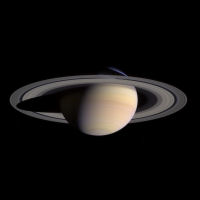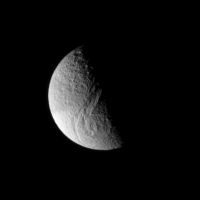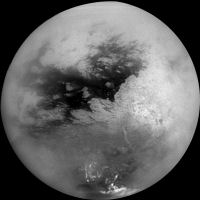Cassini Scientist for a Day Competition: International edition
13 October 2009
The autumn 2009 edition of the 'Cassini Scientist for a Day competition' is international. Students from around the world are invited to submit a 500-word essay explaining their choice of three targets selected to be imaged by Cassini. The competition is open for participating European countries until October 30 2009.Your chance to be a Cassini Scientist for a day
 |
School students from participating countries will choose one of three targets that Cassini imaged and write an essay to justify their choice to a panel of experts. Essays must be submitted to the appropriate national organiser who will select the winners for that nation. Note that closing dates, competition rules and age categories may vary from country to country.
Details of participating countries are provided on the NASA Jet Propulsion Laboratory (JPL) website, go here.
Winners of the competition will have the opportunity to have their questions about Saturn and the Cassini mission answered by international Cassini scientists.
Cassini-Huygens Mission
The Cassini-Huygens mission is an international endeavour between NASA, ESA and the Italian Space Agency (ASI). In 2004, after a journey of nearly seven years the spacecraft, made up of NASA’s Cassini orbiter and ESA’s Huygens probe, was the first to enter orbit around Saturn.
In January 2005, the Huygens probe touched down on the surface of Titan, one of Saturn’s moons. This is the only landing to take place in the outer Solar System and the furthest from Earth.
The Cassini spacecraft is currently in orbit around Saturn providing scientists with an abundance of information about the giant planet and its moons.
Which of these three targets would you choose?
To enter the competition students should study each of the three targets that Cassini will image on the 11 October 2009 and decide which one they think will yield the best science results. A brief description of each of the targets is given below along with links to further information.
The second largest planet in the Solar System, Saturn, is mostly made up of Hydrogen and Helium. Known as a gas giant this planet has no distinct boundary between its atmosphere and surface.
Saturn is famous for its rings. There is a system of seven concentric rings surrounding the planet. The rings are composed from many icy and rocky particles ranging in size from that of a grain of sugar to a house, and each travelling in their own orbit. The rings of Saturn have baffled astronomers since they were discovered by Galileo Galilei in 1610.
The rings are constantly changing but what they are and how they formed is still uncertain. To find out more about this target view the information on the 'Cassini Scientist for a Day' competition pages, go here.
Saturn's moon Tethys was discovered in 1684 by Giovanni Cassini. It is a small, airless body that is covered in cliffs and craters, and is thought to be made almost entirely of water ice with a small amount of rock.
Tethys is embedded in Saturn's outermost ring, called the E ring. This ring consists of extraordinarily small particles of ice and dust. Each of Saturn’s rings have been allocated a letter as a means of identification, they are, from Saturn outwards; D, C, B, A (these are the main four rings), F, G and E.
Some scientists believe that Tethys was once predominately liquid that has since frozen and perhaps there are more tiny moons in the E ring that have yet to be discovered. To find out more about this target view the information on the 'Cassini Scientist for a Day' competition pages, go here.
Titan is the second largest moon in the Solar System and the only one known to have a thick planet-like atmosphere. This large moon was shrouded with mystery for centuries as it has a thick planet-like atmosphere.
Titan's atmosphere is predominantly made of Nitrogen with hydrocarbon elements present too, giving the moon an orange hue. The atmosphere is believed to be similar to Earth’s before life started and the hydrocarbons are the building blocks for amino acids that are necessary for life.
Titan's surface is thought to be covered in rivers, lakes and oceans. Unlike Earth the liquid flowing on this moon is not water but is composed of hydrocarbons.
There is still much to learn about this unusual moon using information about its atmosphere and surface recorded by ESA's Huygens probe along with data from remote observations taken during the Cassini orbiter flybys. To find out more about this target view the information on the 'Cassini Scientist for a Day' competition pages, go here.
To find out more about what the Huygens probe discovered about Titan go here
A strong European interest in Cassini-Huygens
The Huygens probe was developed by ESA and many European countries were involved in the development of the 12 instruments on-board the Cassini orbiter.
Data returned to Earth by the Huygens probe, along with data from the ongoing Cassini mission, are studied by hundreds of scientists from around the world. Many of the scientists participating in this international mission of exploration and discovery are European.



